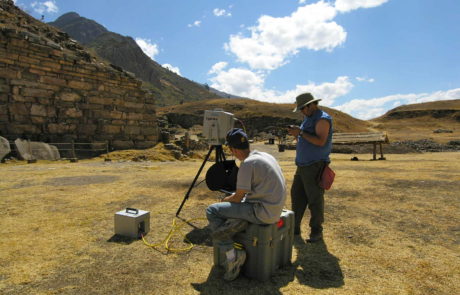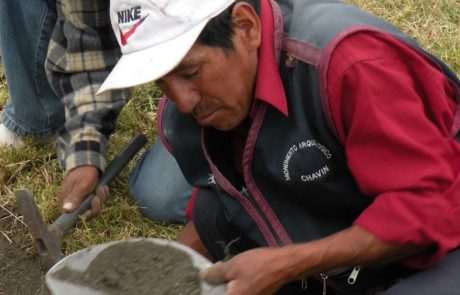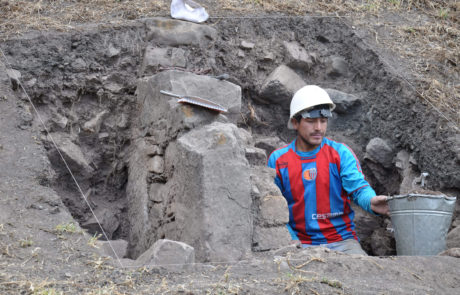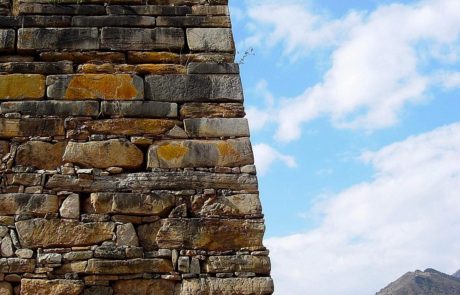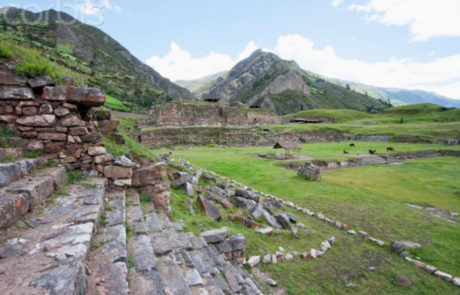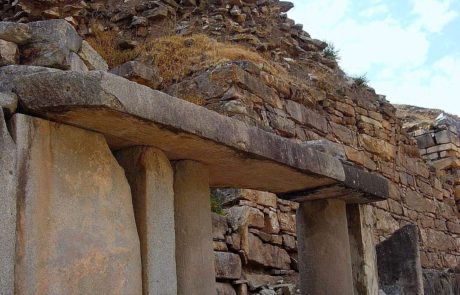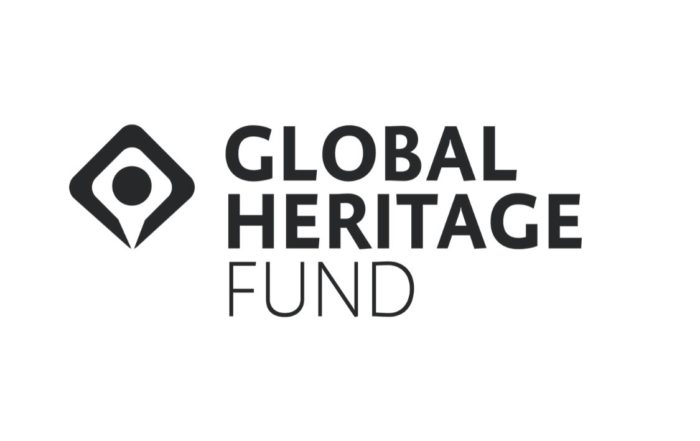Chavín de Huántar, Peru
More than a thousand of years before the Inca Empire, a great pre-Columbian civilization flourished in the Andes Mountains some 250 kilometers north of modern day Lima, Peru. Between the Pacific Coast and the Amazon River, the Chavín people developed a culturally rich society with a complex religious hierarchy and an extensive trade network yet left scant archaeological evidence save for their capital city. Here at 3,150 meters above sea level, Chavín de Huántar served as the center of social, political, and religious activity in the Andean Highlands between 1,500 and 300 B.C., evident in the still breathtaking stone buildings, terraces and plazas embellished with anthropomorphic and zoomorphic bas-relief carvings. While little is known of the Chavín people, their visual legacy traveled south and along the coast through these striking motifs.
Mysticism and architecture are complicit even now at Chavín de Huántar. During the annual heavy rains, water flows through a precisely designed network of vents and drains, unprecedented in South America, that still roars with the atavistic bellows of the jaguar, an animal sacred to the Chavín people. Internal pathways through the main temple, some of them underground, seem designed to confuse the worshiper, walking naked in the dark, intoxicated on hallucinogenic drugs, one of the many coercive tools of control wielded by Chavín de Huántar’s shaman elite.
Its inhabitants mysteriously disappeared and over 2,000 years passed before Chavín de Huántar was rediscovered, swallowed by jungle and devastated by natural disasters. When Global Heritage Fund stepped in with our partners, the profound challenges included structural instability, inadequate site maintenance, ongoing environmental threats and endemic poverty in the surrounding community. Yet this remote mountain setting without encroaching development and a rich cultural context positioned Chavín well for long-term preservation.
To conserve the most critically endangered structures above and below ground, and to increase social and economic opportunities for native stakeholders, Global Heritage Fund undertook a master plan that would radically preserve the site and regulate activities within the surrounding area while developing strategies to link these operations with the local population. Global Heritage Fund and our partners mapped the entire drainage system using the latest remote-sensing technology including ground-penetrating radar, magnetometry and resistivity methods. Excavations revealed vital architectural details that chart the growth of this esoteric spiritual center while conservation work reduced water penetration, and improved ventilation and drainage.
Enhancing structural stability increased the potential for sustainable tourism, as did our investments in reviving lost artisanal techniques, from indigenous clothing and handicrafts to cuisine. We also supported a post-excavation conservation lab with an emphasis on stone and ceramic artifacts to empower Peruvian conservation teams. This funding provided year-round local training and employment, and created conditions for Chavín artifacts, once scattered across Peru, to be returned to the Chavín National Museum where we guided the establishment of Peru’s first stone conservation laboratory.
Some images courtesy of David Almeida and Peter Langer


